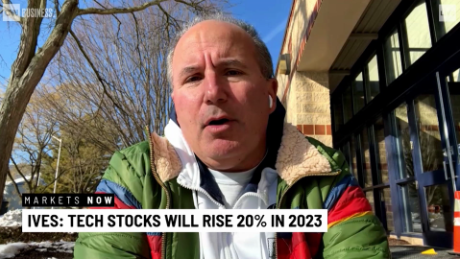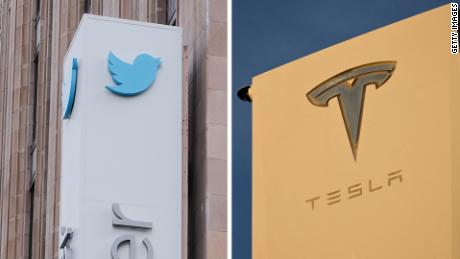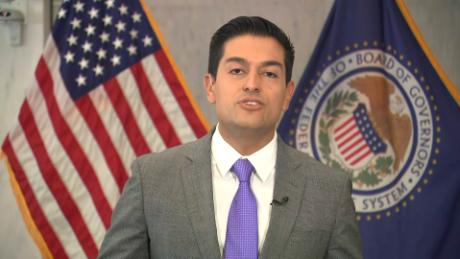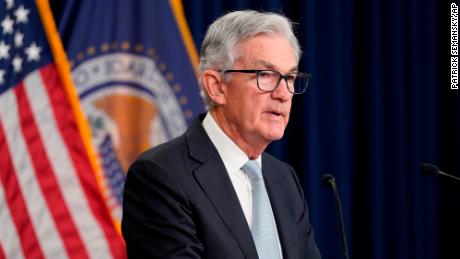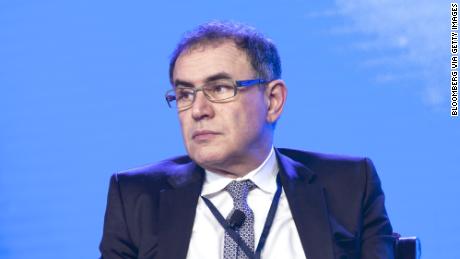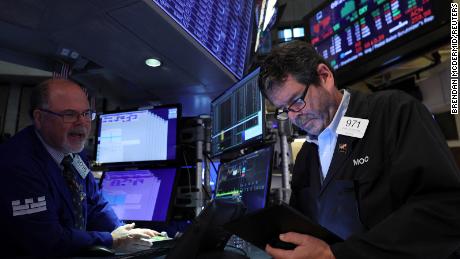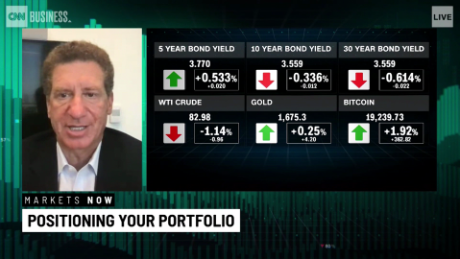New York (CNN Business)Wells Fargo is finally doing what it should have done long ago: Hire an outsider CEO who isn't stained by the bank's toxic culture.
The odds were always stacked against CEO Tim Sloan, a three-decade veteran of Wells Fargo (WFC) who stepped down suddenly last week.
Sloan, a plainspoken and affable executive, was never great casting as a change agent. He was simply too tied to the sins of the bank's not-so-distant past.
"As good as a guy as he is, he is still associated with the old Wells Fargo," said Andy Gilman, president and CEO of CommCore Consulting. "And just like baseball, you can't fire the whole team. So, you fire the manager."
But the challenge may just be getting started for Wells Fargo. The 167-year-old bank, which said it wants to hire an outsider as its next CEO, must now convince a talented stranger to take a difficult job. And the new CEO must move swiftly to convince employees, angry politicians and ŌĆö most importantly ŌĆö regulators that Wells Fargo's rotten culture is truly gone.
RBC analyst Gerard Cassidy warned that Sloan's successor faces "Herculean tasks" in restoring Wells Fargo to greatness.
'I was becoming a distraction'
The management shakeup comes just two weeks after Sloan was once again slammed by lawmakers at a hearing in Congress.
"There's just been too much focus on me and it's impacting our ability to move forward," Sloan told analysts during a conference call after the announcement last Thursday. "I could not keep myself in a position where I was becoming a distraction."
Lawmakers signaled that they aren't satisfied that Sloan's departure will solve Wells Fargo's cultural problems.
"It's still broken," Senator Sherrod Brown, the ranking member of the Senate Banking Committee, told CNN Business. "It's not going to get fixed by only changing the guy at the top."
The decision to hire an outsider is a smart move, albeit one that in retrospect should have been done in fall 2016, when the scandal erupted. The bank shocked the nation by claiming rogue employees ŌĆö 5,300 of them ŌĆö opened millions of fake bank and credit card accounts.
"Yes, you have rogue employees, but there is a culture set from the top," said Gilman.
Wells Fargo elevated Sloan despite the fact that as chief operating officer he oversaw the community banking division at the heart of the fake-accounts scandal. Sloan even championed Wells Fargo's notorious cross-selling metrics to Wall Street.
As CEO, Sloan vowed to clean up the bank's culture ŌĆö and he took meaningful steps.
He pushed out managers and senior executives and eliminated the unrealistic sales goals that drove employees to open fake accounts. Sloan urged workers to speak up if they saw something shady and promised to shore up the bank's confidential ethics hotline.
R. Scott Siefers, analyst at Sandler O'Neill, credited Sloan with doing "quite a bit of heavy lifting" but said in the end many parties "didn't want to move forward with an insider at the helm."
Drip, drip, drip of scandal
While Sloan tried to fix Wells Fargo, new problems continued to emerge. Wells Fargo admitted to charging thousands of borrowers for auto insurance they didn't need and hundreds of homebuyers for mortgage fees they didn't deserve.
The bank said some workers altered documents about business clients and it set aside $285 million to refund foreign exchange and wealth-management clients it overcharged. Even customers who bought pet insurance from Wells Fargo may have been ripped off.
Sloan failed to convince the Federal Reserve to lift the unprecedented asset cap it imposed on Wells Fargo in early 2018 for "widespread consumer abuses." The timeline of getting out of the penalty box kept slipping.
Getting the asset cap lifted is one of the most pressing issues facing Wells Fargo. It's preventing Wells Fargo from growing, hurting its financial results and denting confidence in the bank.
"That is a critical factor," said Christopher Wolfe, head of North American banks at Fitch Ratings. "It's not so much the asset cap itself. It's the fact that if you can't satisfy regulators, it says something."
Wells Fargo's stock initially jumped after Sloan announced his exit. But by Friday afternoon it was down 2%, perhaps reflecting a realization that the troubles aren't over.
"It still faces gale force political and regulatory headwinds," said Isaac Boltansky, director of policy research at Compass Point Research & Trading.
Who wants this job?
Hiring a fresh leader with a strong track record could help Wells Fargo convince authorities ŌĆö and politicians ŌĆö that it's cleaned up its act. Analysts said Wells Fargo could especially benefit from a leader who has a history of working with Washington.
Several former Goldman Sachs (GS) execs have been floated as potential CEOs. Gary Cohn, former Goldman president and Trump administration economic adviser, has previously denied he's interested in the job. Ditto for former Goldman Sachs president Harvey Schwartz.
Wall Street analysts have speculated that Richard Davis, the former CEO of US Bank (USB), could be a good fit for San Francisco-based Wells Fargo.
"Davis is from California and still has family there," Barclays analyst Jason Goldberg wrote in a report on Friday.
And an added bonus for Davis: One of the executives he oversaw at US Bank was Joseph Otting, who currently regulates Wells Fargo as the Comptroller of the Currency.
Wells Fargo could make history by being the first mega bank to hire a woman CEO. Marianne Lake, JPMorgan Chase's (JPM) well-respected chief financial officer, would be a coup for Wells Fargo.
Despite its problems, Wells Fargo may still be a desirable bank to run because of its long history and massive reach. The bank has nearly $2 trillion in assets, 259,000 employees and almost 6,000 branches across the country.
"It's got to be a highly-sought-after job for someone with a lot of self-confidence and ambition," said Siefers, the Sandler O'Neil analyst.
Fixing Wells Fargo
Wells Fargo might not have to go far to find its new boss.
Charles Elson, an authority on corporate governance at the University of Delaware, said that Wells Fargo would be smart to make interim CEO C. Allen Parker the permanent replacement. Parker had been Wells Fargo's general counsel and before that he helped run the law firm Cravath, Swaine & Moore, where his clients included JPMorgan and Citigroup (C).
"He's quiet and effective ŌĆö exactly what you need," said Elson, who owns shares of Wells Fargo.
No matter who takes over, he or she will need to persuade the public that Wells Fargo has truly changed.
"There is only one prescription for Wells Fargo," said Boltansky, the Compass policy director: "Stay out of the headlines long enough to right the ship."


